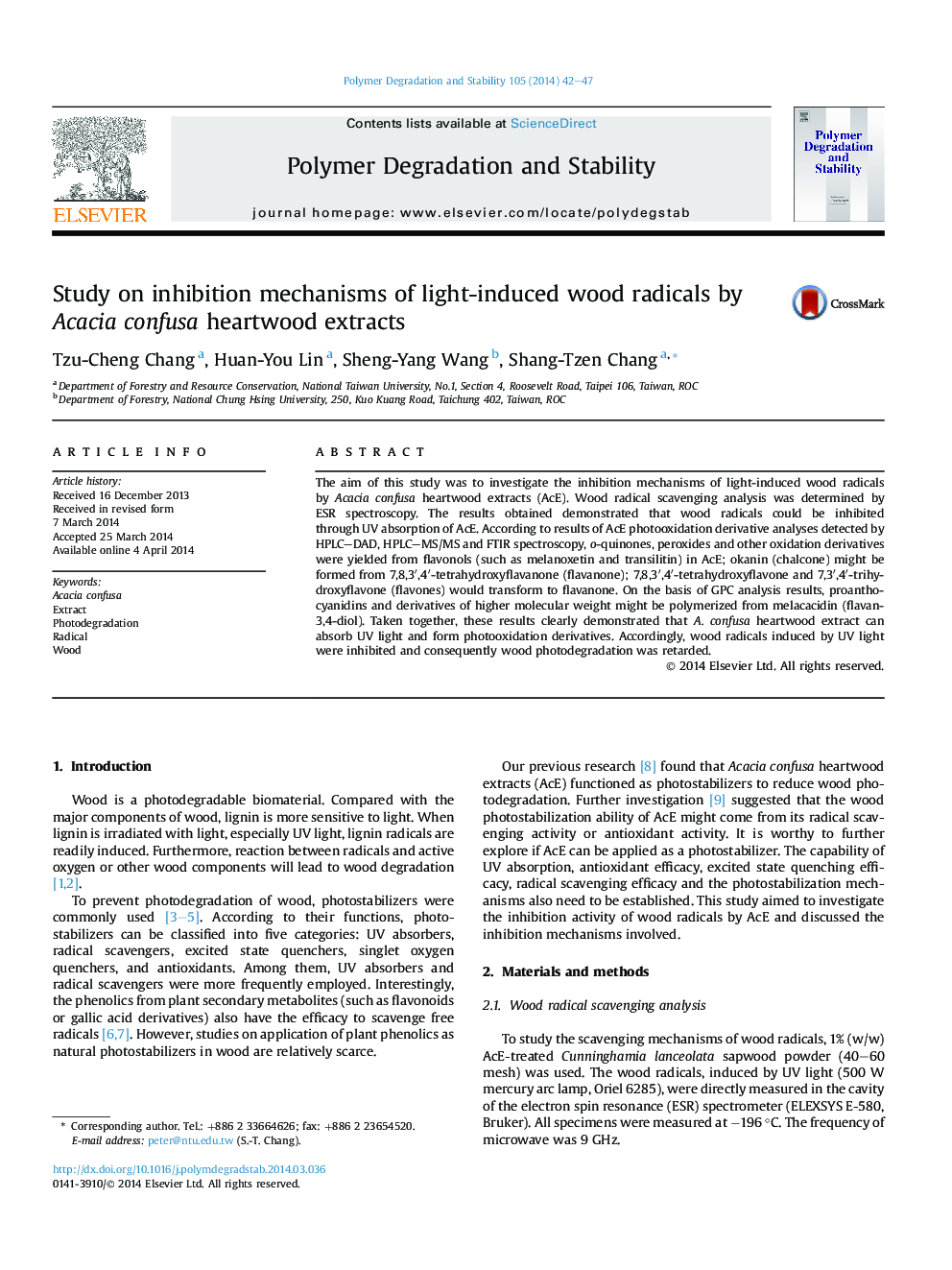| Article ID | Journal | Published Year | Pages | File Type |
|---|---|---|---|---|
| 5201877 | Polymer Degradation and Stability | 2014 | 6 Pages |
The aim of this study was to investigate the inhibition mechanisms of light-induced wood radicals by Acacia confusa heartwood extracts (AcE). Wood radical scavenging analysis was determined by ESR spectroscopy. The results obtained demonstrated that wood radicals could be inhibited through UV absorption of AcE. According to results of AcE photooxidation derivative analyses detected by HPLC-DAD, HPLC-MS/MS and FTIR spectroscopy, o-quinones, peroxides and other oxidation derivatives were yielded from flavonols (such as melanoxetin and transilitin) in AcE; okanin (chalcone) might be formed from 7,8,3â²,4â²-tetrahydroxyflavanone (flavanone); 7,8,3â²,4â²-tetrahydroxyflavone and 7,3â²,4â²-trihydroxyflavone (flavones) would transform to flavanone. On the basis of GPC analysis results, proanthocyanidins and derivatives of higher molecular weight might be polymerized from melacacidin (flavan-3,4-diol). Taken together, these results clearly demonstrated that A. confusa heartwood extract can absorb UV light and form photooxidation derivatives. Accordingly, wood radicals induced by UV light were inhibited and consequently wood photodegradation was retarded.
